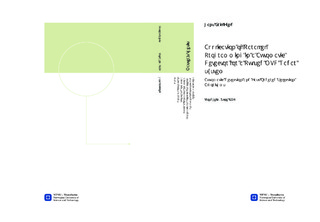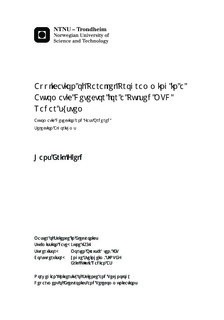| dc.description.abstract | Automatic CFAR Detection is to be implemented in a real time pulsed MTD radar system, used in a mar-itime application.The CFAR should be able to have good detection properties in bad weather conditions, where rough seastates, heavy downpour and high winds are expected.Sucient detection properties may be achieved using an Ordered Statistics based CFAR to generate detec-tion threshold for the MTD radar video signal.The MTD video is the coherent raw video of the signal ltered in a bandpass lter bank, separating theDoppler frequency space of the video into a number of individual Doppler channels.The Doppler frequency shift relates to a velocity, implying that every Doppler channel represents a velocityspace, so that targets and clutter may further resolved by their relative Doppler velocityCFAR algorithms are applied to all the test cells in the MTD video signal. These algorithms have to estimatea threshold that is used at discriminating real targets from clutter in all the velocity channels of the MTDvideo.A good threshold estimate is to have a low probability of false detections, and a high probability of declaringactual targets.This is to be valid in all clutter conditions, even when one or multiple targets are surrounded by non-stationary clutter and closely spaced.The Ordered Statistics algorithms involves using the k'th largest value of the test window as a mean clutterpower estimate for its corresponding test cell.The ordered statistics model makes a threshold selection based on the rank of the samples. A task withcomplexity increasing as a function of window length and k parameter.This task is to be performed on a large number of test cells in a system running real time. In a real timeradar system, all processing have to be done before the next scan becomes available.Radian AS works on developing a PC based MTD Radar system for a pulsed Doppler radar.The radar interfaces the PC through a PCI Express radar receiver card developed by Radian AS.This thesis investigates the application of parallel programming in C/C++ in order to achieve real time au-tomatic detection in a PC based MTD radar. Two means of parallel programming are considered, involvingexploitation of multi core CPU architecture as well as using a dedicated GPU as a co processor.OpenMP is an Open Source library with compiler instructions for running tasks in parallel over multiplecores in a CPU. It is easily incorporated into C/C++ code, and may be used with most multi core CPUs.nVidia has made GP-GPU computing available to the public through CUDA, selling CUDA enabled graphicscards and providing the tools as well as documentation needed for a programmer to be able to use the GPUas co processor.CUDA C integrates the SIMT abstractions of CUDA, and a programmer may write C code that is compiledand executed on the GPU.Dierent implementations of the OS-CFAR algorithm for threshold estimation are implemented using CUDAand OpenMP.The dierent implementations are evaluated and compared to each other in terms of the results gatheredfrom executing them on MTD video.The experiences drawn from this work is concluded with respect to the application of parallel programming,and further recommendations for the future of the project of making a PC based pulsed MTD Radar signalprocessor.This thesis introduces a CUDA algorithm for high throughput ordered selection using short window lengthson a large number of cells under test.An algorithm developed in C for the project assignment leading up to this thesis is enabled openMP, alongwith a C++ STL algorithm, for performing ordered statistics ranked selection on the CPU. In addition, theCUDA OS-CFAR algorithm is ported to C with openMP.The three implementations in C/C++ are compared to the CUDA C implementation. | nb_NO |

